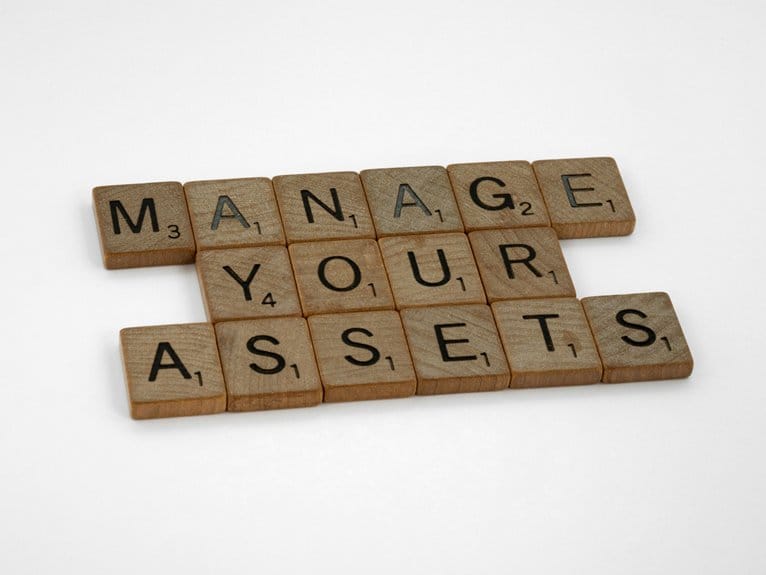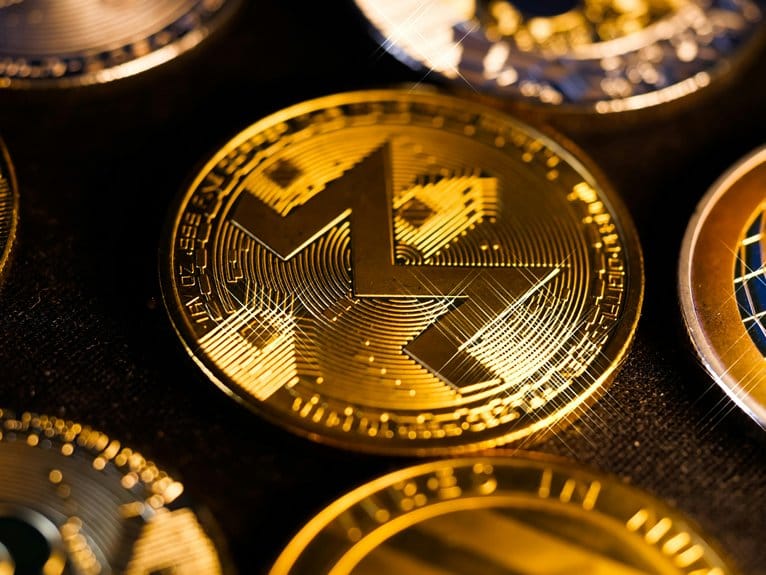Tokenized real-world assets (RWAs) represent traditional assets converted into blockchain-based digital tokens, enabling fractional ownership and enhanced liquidity. This emerging investment category encompasses real estate, commodities, artwork, and securities, with projections indicating a $16.1 trillion market by 2030. Investors benefit from reduced capital requirements, 24/7 trading capabilities, and automated compliance through smart contracts. Key considerations include market volatility, regulatory compliance across jurisdictions, and platform selection based on security features and trading volumes. Success in RWA investing requires thorough due diligence, understanding of blockchain technology, and strategic monitoring of both token performance and underlying asset fundamentals.
What Are Tokenized Real-World Assets
Tokenized real-world assets (RWAs) represent digital tokens issued on a blockchain that derive their value from tangible or intangible assets existing in the physical world. These assets can include real estate, commodities, artwork, securities, or intellectual property rights. Through the tokenization process, traditional assets are converted into digital tokens that can be traded, transferred, and managed on blockchain networks.
The fundamental principle behind RWA tokenization involves creating a digital representation of ownership rights that is both immutable and divisible. Each token corresponds to a specific fraction of the underlying asset, enabling fractional ownership and increased liquidity for traditionally illiquid assets. Smart contracts govern these digital ownership rights, automating compliance, distributions, and trading parameters.
RWAs bridge the gap between traditional finance and blockchain technology by combining the benefits of both systems. They maintain the intrinsic value and legal framework of conventional assets while leveraging blockchain's advantages of transparency, efficiency, and accessibility.
This technological innovation reduces barriers to entry, streamlines asset transfer processes, and enables 24/7 global trading of previously restricted or inaccessible assets.
Benefits of RWA Tokenization
Through the implementation of RWA tokenization, market participants gain access to numerous compelling advantages that fundamentally transform traditional asset management and trading. The technology enables fractional ownership of previously indivisible assets, allowing investors to acquire portions of high-value items like real estate or fine art with minimal capital requirements. This democratization of investment opportunities expands market accessibility while reducing barriers to entry.
Liquidity enhancement represents another significant benefit, as tokenized assets can be traded 24/7 on secondary markets, eliminating the prolonged settlement periods associated with traditional asset transfers. The automated nature of smart contracts reduces administrative overhead and transaction costs while ensuring transparent, immutable record-keeping of ownership and transfers.
Furthermore, RWA tokenization facilitates portfolio diversification through programmable compliance, automated dividend distributions, and streamlined cross-border transactions. The technology's inherent standardization of previously heterogeneous assets improves price discovery mechanisms and market efficiency.
Popular Types of Tokenized Assets
Several distinct categories of real-world assets have emerged as prime candidates for tokenization, with real estate, commodities, and financial instruments leading adoption rates.
Real estate tokenization has gained particular traction, enabling fractional ownership of commercial properties, residential developments, and land parcels. Commodities trading has also embraced tokenization, with tokens representing ownership rights to precious metals, agricultural products, and energy resources.
The market has expanded to include high-value collectibles, with art collectibles and luxury goods becoming increasingly tokenized through blockchain platforms.
Sports memorabilia tokenization has created new investment opportunities, allowing fans to own shares in valuable historical items. Intellectual property rights are being transformed through tokenization, enabling fractional ownership of patents, trademarks, and creative works.
Additionally, environmental assets like carbon credits have found a natural fit with tokenization, creating more efficient markets for emissions trading.
Private equity tokens have emerged as a significant category, providing investors access to previously illiquid venture capital and private company shares, while simultaneously reducing minimum investment thresholds and increasing market accessibility.
Investment Risks and Considerations
Investors exploring tokenized real-world assets face multiple risk categories that require careful evaluation before portfolio allocation. Market volatility in both traditional and digital asset markets can significantly impact token values, while investment liquidity often remains constrained by limited secondary market trading volumes.
Comprehensive risk assessment must account for both conventional asset risks and blockchain-specific challenges. Due diligence becomes particularly critical when evaluating tokenized assets, as proper asset valuation requires expertise in both traditional securities analysis and distributed ledger technology.
Investor protection mechanisms may vary across jurisdictions, with regulatory frameworks still evolving for these hybrid investments. A well-planned diversification strategy should balance exposure across different asset classes, token types, and underlying real-world assets.
Technological challenges present additional considerations, including smart contract vulnerabilities, custody solutions, and blockchain network reliability. Investors must assess platform security, token standards compliance, and the technical infrastructure supporting their investments.
Regular monitoring of regulatory developments, market conditions, and technological updates remains essential for maintaining a resilient tokenized asset portfolio.
Legal and Regulatory Framework
While tokenized real-world assets operate within existing financial regulations, their hybrid nature necessitates compliance with multiple regulatory frameworks across securities laws, digital asset guidelines, and traditional asset regulations. This creates significant compliance challenges as organizations must navigate jurisdictional differences in how tokenized assets are classified and regulated.
Key regulatory bodies, including the SEC, CFTC, and international financial authorities, continue to develop frameworks for oversight and investor protections. The legal framework surrounding tokenized assets remains dynamic, with emerging security considerations related to smart contracts, custody arrangements, and transfer restrictions.
Organizations must address taxation implications that vary by jurisdiction, particularly regarding the treatment of fractional ownership and secondary market trading. Recent legal precedents have begun to shape market standards, though significant regulatory gaps persist in areas such as cross-border transactions and enforcement mechanisms.
Companies engaging in tokenization must implement robust compliance programs that address both traditional securities requirements and blockchain-specific regulations, while maintaining flexibility to adapt to evolving regulatory guidance and international harmonization efforts.
Selecting the Right Investment Platform
Choosing an appropriate investment platform for tokenized real-world assets requires systematic evaluation of key operational, technical, and financial parameters. Investors must analyze platform features including security protocols, trading volumes, asset diversity, and regulatory compliance status.
Critical assessment of liquidity provisions, transaction fees, and custody solutions helps determine platform viability for specific investment goals. The platform's technical infrastructure deserves thorough examination, particularly focusing on blockchain technology implementation, smart contract functionality, and system uptime reliability.
User experience aspects, such as interface design, mobile accessibility, and customer support responsiveness, significantly impact trading efficiency. Investors should verify the platform's track record in handling similar asset classes and its ability to execute trades promptly.
Additional considerations include the platform's market reach, partnership networks, and integration capabilities with traditional financial systems. Evaluation metrics should encompass settlement times, minimum investment thresholds, and available exit mechanisms.
Platforms offering comprehensive documentation, transparent fee structures, and regular security audits typically demonstrate higher operational maturity and risk management capabilities, making them more suitable for institutional and retail investors alike.
Steps to Invest in RWAs
Successfully investing in tokenized real-world assets (RWAs) follows a structured process that encompasses several critical steps. The journey begins with thorough due diligence, researching the underlying asset's fundamentals, market valuation, and historical performance data.
Investors must then assess the token's smart contract specifications, including ownership rights, dividend distributions, and governance mechanisms.
The next phase involves analyzing current market trends and establishing clear investment strategies aligned with portfolio objectives. This includes determining optimal position sizes, entry points, and risk management parameters.
Investors should evaluate liquidity provisions, trading volumes, and market depth across different platforms to ensure efficient execution.
Following platform selection, investors need to complete necessary compliance requirements, including KYC/AML verification and accreditation status where applicable.
The final execution phase involves setting up a compatible digital wallet, acquiring the required cryptocurrency for purchase, and executing the trade according to predetermined parameters.
Post-investment monitoring is crucial, tracking both the token's performance and the underlying asset's fundamentals while staying informed about regulatory developments that may impact the investment's long-term viability.
Future of Asset Tokenization
The future of asset tokenization presents a transformative outlook for global financial markets, with projections indicating a $16.1 trillion tokenized asset market by 2030. This growth trajectory is driven by increasing institutional adoption, technological advancements, and evolving regulatory frameworks that support digital asset infrastructure.
Market trends suggest that traditional assets, including real estate, commodities, and private equity, will experience accelerated tokenization rates over the next decade. Enhanced asset liquidity through tokenization is expected to democratize investment access, enabling fractional ownership and reducing minimum investment thresholds. Financial institutions are positioning themselves to capitalize on this shift by developing specialized trading platforms and custody solutions.
Key developments anticipated in the tokenization landscape include the emergence of standardized protocols, improved interoperability between blockchain networks, and sophisticated smart contract capabilities.
These advancements will facilitate seamless cross-border transactions and automated compliance procedures. Industry experts predict that tokenization will significantly reduce transaction costs, streamline settlement processes, and create new investment opportunities in previously illiquid assets, fundamentally reshaping how value is exchanged in global markets.
Frequently Asked Questions
How Long Does It Typically Take to Liquidate Tokenized Real Estate Investments?
Liquidation timelines for tokenized real estate vary from days to weeks, depending on market demand and platform liquidity concerns. Secondary market trading can expedite sales compared to traditional real estate transactions.
Can Tokenized Assets Be Used as Collateral for Traditional Bank Loans?
Traditional banks generally remain hesitant to accept tokenized assets as collateral due to uncertain asset valuation methods and evolving collateral requirements within regulatory frameworks governing digital assets.
What Happens to Tokenized Assets if the Issuing Platform Becomes Bankrupt?
Asset recovery during platform bankruptcy typically depends on legal structures established beforehand. Properly segregated assets remain client property, while platform liability is limited to operational services and technology infrastructure.
Are There Minimum Holding Periods for Tokenized Real-World Assets?
Minimum holding periods vary by asset type and jurisdiction, with regulatory implications often determining lockup requirements. Liquidity concerns may necessitate longer holding periods for certain tokenized assets.
Can Investors Transfer Tokenized Assets Between Different Blockchain Platforms?
Cross-chain transfers of tokenized assets remain limited due to interoperability challenges. While emerging bridge protocols and cross-chain solutions exist, technical limitations and platform-specific standards currently restrict seamless asset movement between blockchains.
Conclusion
Asset tokenization represents a transformative development in financial markets, offering enhanced liquidity, fractional ownership, and reduced barriers to entry. While regulatory frameworks continue to evolve, the market for tokenized real-world assets demonstrates significant growth potential, projected to reach $16.1 trillion by 2030. Success in this emerging sector requires careful due diligence, platform selection, and regulatory compliance. The integration of blockchain technology with traditional assets signals a fundamental shift in investment methodologies.





